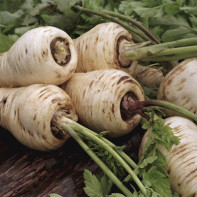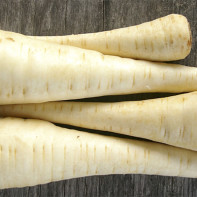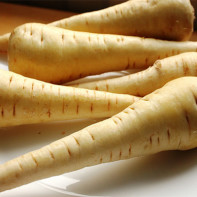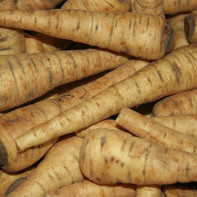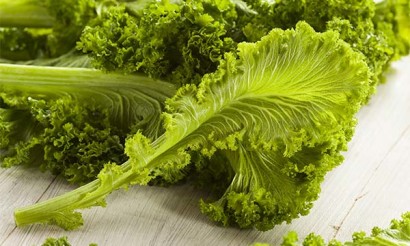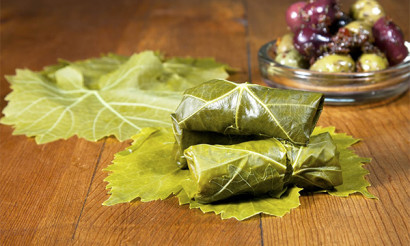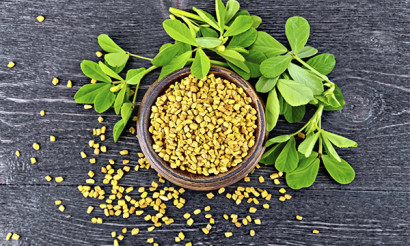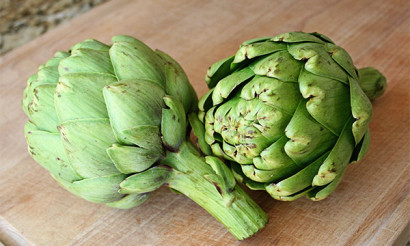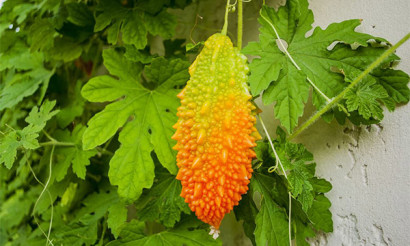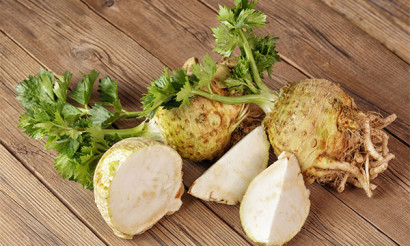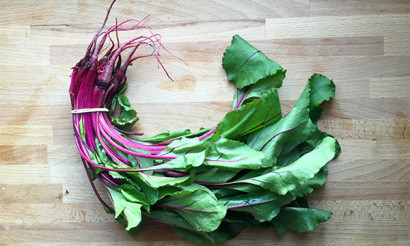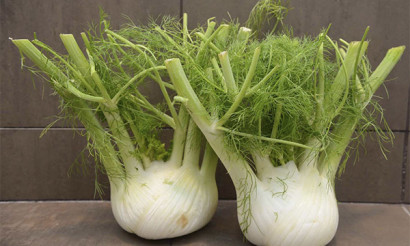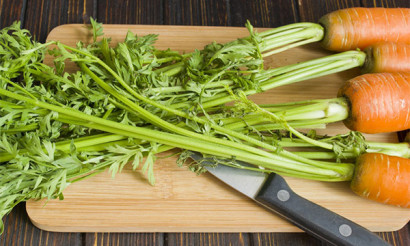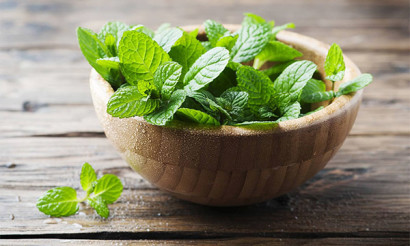Parsnip (vegetable): useful properties and contraindications
Parsnip is a crop with a pleasant smell, in addition, it tastes sweet. Due to its rich vitamin and mineral composition, this product has found application in the culinary sphere, folk medicine and cosmetic field. The useful and harmful qualities of this root vegetable have been studied by experts in the field of medicine and proper nutrition.
- What parsnips look like and where they grow
- The difference between parsnips and celery
- Composition and Calories
- How are parsnips useful?
- General Benefits
- For Women
- For Men
- In Pregnancy
- For breastfeeding
- For children
- When losing weight
- Parsnip in traditional medicine
- Can I use parsnips for diabetes and pancreatitis
- Parsnip-based medications
- Cosmetic Applications
- Using parsnips in cooking
- Harm and Contraindications
- When to harvest and how to store parsnips
- What can be cooked from parsnips: Recipes
- Mashed potatoes
- Borscht
- Salad
- Interesting Facts
The healing characteristics of parsnips have been known since ancient times. Back then, healers used such a plant to treat disorders of the digestive tract, kidney cramps, as well as male sexual weakness. Despite the fact that now there are many new drugs and innovative methods of treatment, interest in natural remedies has not diminished. On the contrary, official medicine supports the use of herbs for therapeutic purposes. Popularly this plant is also called "popovnik" or "field borscht".
What does parsnip look like and where does it grow
Parsnip is a plant that is a representative of the Umbrella, also known as the white carrot. The ground part of the culture can reach 2 meters in length. The stem of the root crop is straight, and there are long and large leaves on the slender branches. The flowers of the plant are represented by complex umbrellas with yellow coloration.
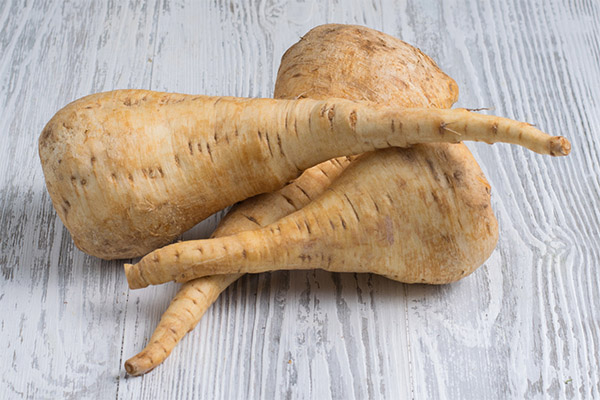
The fruits of the culture are green-yellowish seeds. At the stage of maturation, each fruit is divided into two parts, each of which contains a seed. The underlying part of the vegetable has a cone-shaped, cream-colored shape. Externally, it resembles an ordinary carrot. The size of such a "carrot" is 10-25 cm.
The historical homeland of the plant is considered to be the Caucasus. But today it is widely cultivated in European countries, Asia and America. The parsnip vegetable grows beautifully in almost all soils. It is quite unpretentious. For the plant to give a good harvest, it is enough that the soil is thoroughly dug.
How parsnips differ from celery
Both of these plants belong to the category of "white fruits", they are stored well throughout the winter, preserving all their medicinal qualities. Celery and parsnip differ in their chemical composition. For example, celery is rich in carbohydrates. Among the minerals there are K, Mg, Ca, Zn, P, Na and Fe. The constant consumption of this product can increase vitality and have a rejuvenating effect on the body. The celery root is effective for constipation and in the fight against obesity, because it contains enough fiber to suppress hunger.
Parsnips are rich in carotene, a lot of vitamin oils and minerals. For example, its high concentration of potassium is important for the heart muscle. In addition, this root vegetable provides removal of excess water from the body, has a beneficial effect on the CNS. Another advantage of this product is that it is useful for diabetic patients, because it contains fructose and sucrose, which is not harmful to this group of patients. Also parsnips are characterized by analgesic and expectorant effects.
It is difficult to determine which of these products is more useful, because each of them in its own way is useful and necessary for certain conditions of the human body.
Composition and calories
To find out what characteristics parsnips have, it is required to study its composition. The combination of useful compounds in it is selected by nature itself. So, it contains such biologically active elements as pectins, proteins, starch, fiber, essential oils, B-group vitamins, as well as tocopherol, ascorbic acid, glycosides, etc.
The mineral range is represented by Mg, Ca, Na, Mn, K, Se, Zn, Cu, Fe. All these substances have a positive effect on the human body.
The caloric value of the crop is only 75 calories per 100 grams of vegetable.
What are the benefits of parsnips
General benefits
Healing qualities have all parts of parsnip: seeds, root and leaves. But it is the root vegetable that has the greatest benefit. Parsnip has an octyl butyl ether, which endows the vegetable with a bright and specific smell. In addition, this plant contains furocoumarins. They contribute to the active influence of ultraviolet radiation on the dermis, which makes it possible to use such a plant for vitiligo.
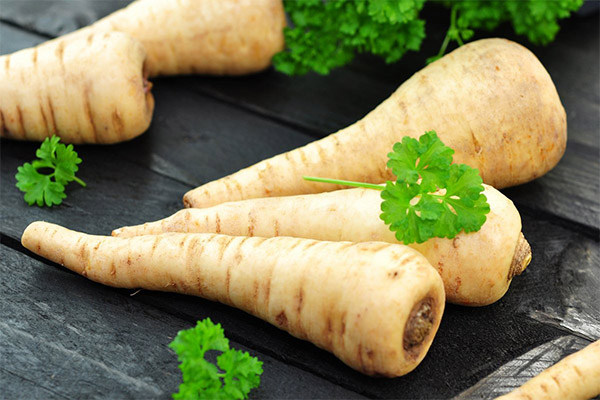
Also popovnik is characterized by diuretic, sedative, antioxidant, analgesic, expectorant and immunostimulating action. The product helps to normalize the digestion processes. The main advantage of this vegetable is that regular consumption normalizes blood glucose and cholesterol levels.
The constant inclusion of this ingredient in food allows you to cleanse the body of toxins, strengthen the walls of blood vessels, regulate the production of digestive enzymes, which makes it possible to improve appetite and speed up metabolism. Due to its low calorie content, the product is considered a dietary dish and can be used for weight loss. However, in the presence of ulcers from the use of such culture in food should be refused.
In addition, white carrots are also necessary for the respiratory organs. This vegetable is indicated for patients with asthma and bronchitis. It is also used in the detection of tuberculosis and pulmonary emphysema.
The presence of vitamin C suggests that the plant can strengthen the body's defenses, reducing the likelihood of disease. If symptoms of colds do appear, you can use the infusion of parsnip root to relieve all manifestations of the disease and cure the cough.
Another advantage of this product is the ability to destroy kidney stones and remove sand together with urine. The crop is distinguished by its anti-inflammatory properties. Therefore, remedies prepared on the basis of white carrots will help to cope with urethritis, cystitis, prostatitis. It can be used even in the case of the development of inflammatory processes in the female genital system.
For women
Popovnik contains various essential oils that stimulate the synthesis of gastric juice, which provides fast digestion. This property, as well as a low caloric value allows you to consume such a vegetable during weight loss.
The white fruit affects the hormonal balance. Certain biologically active elements in the product provide the formation of enzymes that stimulate the production of certain hormones. This allows you to tone the body, as well as increase overall performance.
Also for the beautiful half of humanity white carrots are also useful because it helps in the fight against the first wrinkles. The leaves of this plant should be included in vegetable salads, seasoning them with any vegetable oils. This property of culture is explained by the fact that the vegetable provides the production of collagen, which is so necessary for the skin.
For men
It is known that the representatives of the stronger sex are much more often faced with diseases of the cardiovascular system. Parsnips are also high in potassium, which works as a vasodilator. Thus, when consuming popovnik normalizes blood pressure, prevents the tightening of the veins and arteries. This helps to reduce the burden on the SCS. In addition, folate is found in this vegetable, which helps to reduce the level of homocysteine in the body. It should be noted that an excess of this substance causes various pathologies of the heart.
The crop is characterized by its anti-inflammatory action. It contains an active compound that helps to find and suppress colon cancer cells.
Interestingly, the product affects the male hormonal system. The fact is that it contains components that stimulate the functioning of the excretory glands. The essential oils in it are an effective aphrodisiac. There are many recipes that guarantee an increase in libido.
When pregnant.
It is useful to consume parsnips when carrying a fetus. This is because it has a lot of folic acid, which helps reduce the likelihood of developing neural tube disorders in babies. Also such a vegetable can prevent the development of iron deficiency anemia, as it contains iron, vitamins B9 and C. All these substances are needed for blood production and the prevention of anemia.
When breastfeeding.
It is recommended to use white root and in the diet of young mothers. Such a product is full of vitamins and minerals, which are so necessary for a woman after the birth of a child. For example, this crop has folate, which is useful for the prevention of postpartum depression in women. During lactation, you can eat only heat-treated vegetables. They should be boiled, steamed or baked.
For children.
Root vegetables are enriched with antioxidants and various organic substances that protect the body from many diseases. Compounds such as vitamin C and E help neutralize diseases. Ascorbic acid ensures the formation of white blood cells, which act as the body's main defense. White blood cells also provide the formation of collagen, the main building block of the human body.
As already mentioned, this crop contains a lot of calcium, as well as magnesium, which is responsible for the assimilation of the first substance. Regular consumption of such a vegetable allows you to keep your teeth and bones healthy.
In weight loss.
Since white root is a low-calorie product, it can be included in the diet diet without fearing for the figure. It contains elements that activate metabolic processes, which allows you to accelerate the breakdown of fat.
Also the vegetable due to its diuretic property can remove excess fluid from the body. With the use of parsnips can even be carried out days of discharge. For this purpose, throughout the day you can eat about 1 kg of the vegetable in a boiled or stewed form.
Parsnip in folk medicine
There are a number of healing remedies that can easily be made at home. However, it should be borne in mind that parsnips, like any other herbal remedy, are effective in combination with another type of treatment.
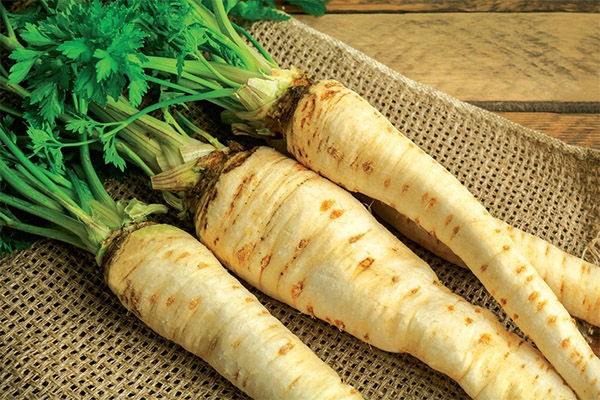
- For example, from the white carrot, you can get a compound with expectorant properties. It will help to eliminate the cough, which is often present in bronchitis and laryngitis. In this case, dried leaves of the culture will be needed. It is necessary to pour 2 tbsp of raw materials with a glass of hot water and insist about half an hour. The finished decoction can be drunk, as well as gargle the throat with it.
- To make a choleretic infusion you need to crush the root of the culture, 1 tbsp. of the pulp pour 1.5 cups of boiled water and place the mixture on a water bath for half an hour. Such a preparation take 2 tablespoons before a meal, so that the medicine will work.
- From the dried roots of popovnik can be obtained an external analgesic, which will help to quickly relieve the pain of bruises, abrasions and sprains. To do this, you must first crush the root of the asthenium, and then take 3 tbsp. of the resulting mass and steep it in boiling water. Then put the parsnip on a gauze napkin and apply as a compress to the affected area.
- You can prepare a very simple elixir to maintain a normal sex life. You just need a squeeze of parsnip mixed with parsley juice in a ratio of 2:1. Such a drink to drink 1 teaspoon before a meal. At night, the dose of such a remedy to increase to 1 tbsp. Such prevention should be carried out within a month. It will allow to restore potency.
- To normalize digestion, you can use a fairly simple recipe. So, you need to pour 1 tbsp of dried leaves 500 ml of water. Cover the container with a lid and boil it for 10 minutes. Then let the mixture cool for two hours, then strain it. Such a healing composition will be effective if you drink it 20 minutes before a meal. Whole week you should drink 50 ml of decoction, the second week double the dose of such a preparation and drink 100 ml of the herbal drink.
- When urolithiasis should be prepared decoction. To do this, obtain a powder from the dried leaves of parsnip, then pour 1 tbsp. of the loose substance with 250 ml of hot water. Then boil the mass for about 15 minutes, and then filter it. Drink the resulting decoction by 1 tbsp. three times a day.
- White root can cope with anemia. In this case, the vegetable should be crushed by grating it on a grater. Then mix 2 tablespoons of the natural component with 1 liter of milk. At the same time, first bring the milk product to a boil, and then add the white carrot. You should wrap a warm towel around a container with a healing composition and insist for 5-6 hours. Store such a remedy in a cold place. For therapeutic purposes, use an infusion of 50 ml before meals for two days. Then take a break for two days, and then repeat the treatment again. The course of therapy is 30 days.
- To cure depression, you can prepare a tincture. To do this, you should take 0.5 cup of chopped root vegetables, put it in a container of 1 liter, pour 500 ml of vodka. Close the jar with a lid. In this form the container should stand in a dark place for a month. After 30 days, filter the mixture and drink 1 tsp. 3 times a day.
- To obtain a mixture designed to treat the intestines and kidneys, you will need to crush fresh leaves. So, for 1 tbsp of raw materials you need 400 ml of boiling water. First, pour water over the leaves, and then boil for about 10 minutes. After that, let the mass to infuse for a while. Then subject the decoction to filtration, and then drink 50 ml three times a day, gradually increasing the dosage to 70 ml. Take a decoction for three weeks.
Can parsnips be eaten with diabetes and pancreatitis
Parsnips are useful for type 2 diabetes. The product normalizes blood glucose levels, improves the functioning of the nervous system and the brain, strengthens the immune system, enhances skin renewal and normalizes the work of the gastrointestinal tract. The vegetable strengthens the walls of blood vessels and peripheral capillaries, which prevents the occurrence of diabetic angiopathy. Consequently, the patient's body is protected from irreversible changes in the retina and the development of such complications as diabetic foot.
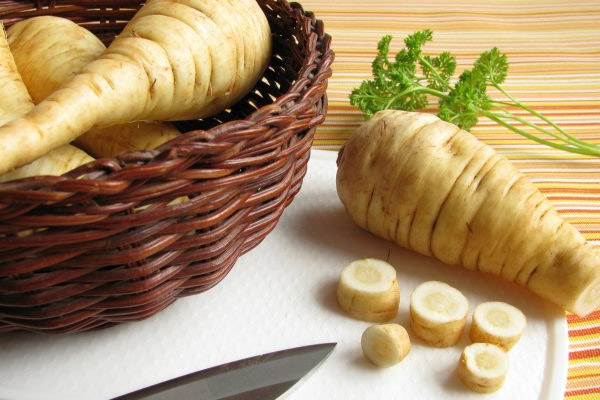
The high level of potassium in the root vegetable strengthens the heart muscle, helps to eliminate water from the body, and lowers blood pressure. This allows you to prevent the development of hypertension and atherosclerosis, as well as such consequences of diabetes, such as stroke and heart attack.
Decoction based on white root is characterized by tonic properties, effectively copes with loss of strength and chronic fatigue, which is often faced by patients in this category. Receiving such a herbal remedy allows you to regain strength and increase muscle tone.
In diabetes, parsnips are used as an immune stimulant. This product perfectly strengthens the immune system, protecting the patient's body not only from colds, but also from various viral diseases. This is also very important in a failure of carbohydrate metabolism, since an increase in blood glucose levels disturbs the immune system.
The product has a positive effect on the endocrine system. So, it helps to normalize the activity of glands, including the pancreas. This makes it possible to increase the synthesis of insulin and adjust the absorption of glucose.
White root will help to establish the pancreas when it is inflamed. So, with pancreatitis is recommended to prepare porridge from popovnik. For its preparation, you need to grate 100 grams of root and pour 500 ml of boiling milk. Then simmer the mass on low heat for three minutes. The porridge is ready. It is useful to eat such a dish for breakfast. After eating it for three hours, it is not recommended to eat anything. If for a week to prepare such a delicacy for breakfast, there will be no problems with the pancreas.
Preparations based on parsnips
Such a crop as parsnip is also popular in the pharmaceutical field as a medicine. On the basis of the extract from this plant, some drugs are made:
- "Beroxan" - used for the treatment of vitiligo and various other skin diseases, also helps with baldness.
- "Pastinacin" - tablets with analgesic action, besides being used for coronary insufficiency.
- "Epigalin" is a drug for the therapy of hyperplasia, prostate, ovarian diseases, mammary glands and uterine endometrium.
All these drugs can only be prescribed by the attending physician. Their uncontrolled use will harm the body and lead to serious side effects.
Applications in cosmetology
The white root vegetable is used not only in the form of medicine in medicine, but also in cosmetology, helping to solve problems with the dermis. There are many recipes that have healing properties.
- For example, for the treatment of vitiligo or acne, a remedy should be prepared. In this case, put half of a large root in a pot with 500 ml of water. Boil the mixture for 10 minutes, and then immediately strain. Cool the finished decoction to room temperature and apply it to wipe your face. Such a remedy will help to relieve inflammation and reduce acne.
- To prepare a composition against wrinkles you need to take a white carrot, peel it and grate it finely. Mix such a porridge with 1 tsp. vegetable oil, one egg yolk and 1 tsp. natural honey. Warm the mixture by placing it in a warm place. After 60 minutes, the ready mask is applied to the face. The mixture acts for 20 minutes, after which it is washed off with warm water. This will smooth out wrinkles, give the skin freshness and youthfulness.
- To get a remedy for hair loss, you need to squeeze the juice from the root vegetable and rub the resulting liquid into the scalp. The mass on the head should be about 15-20 minutes. Then rinse your head with nettle broth. Repeat this procedure each time you wash your hair. The course of treatment - at least 30 procedures.
Popovnik essential oil is also characterized by many useful qualities. For example, this product is used as an antiseptic, it dries inflammation and helps smooth out fine lines. In addition, this oil is used for anti-cellulite massage. Also such a plant component is used for acne. In this case, pimples are spot cauterized.
Masks of fresh parsnip pulp or essential oil of this product are used to cleanse the dermis for acne.
Culinary applications of parsnips
The white carrot has found widespread use not only in medicine and cosmetology, but also in the culinary sphere. This original product is a part of many dishes, salads and sauces. It is used not only the rhizome, but also the above-ground part of popovnik.
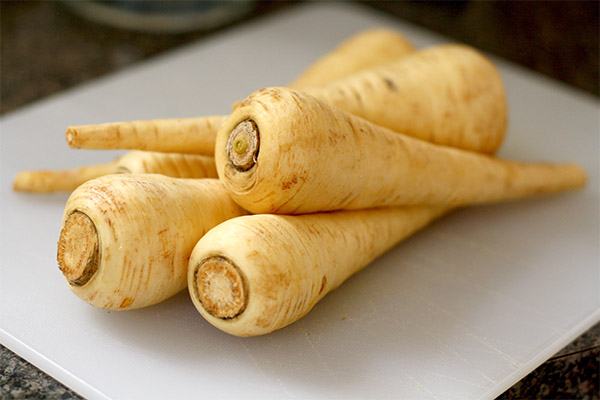
The root of the culture is included in recipes for making first dishes. It is also included in side dishes for stewing meat. In addition, this product is used fresh - it is added to salads, it is used to make preparations for the winter, dried for spice. Leaves of culture are also included in salads and soups.
As a separate dish, the vegetable is rarely prepared. Usually it is a spice in a variety of dishes. Dressing them not only soups and side dishes, but also desserts.
Harm and contraindications
Despite the fact that the white root vegetable is characterized by a number of advantages, there are still certain contraindications, which should always be taken into account.
The contraindication to the use of this product is a severe degree of urolithiasis, serious kidney disease, pronounced disorders of the nervous system, high susceptibility of the dermis to the ultraviolet effects of the sun (parsnip only increases it, which can cause burns that will require treatment).
Preparations with such a plant can be harmful to the weakened body. They should not be taken by children or the elderly.
When to harvest and how to store parsnips
For harvesting, you should choose root crops that do not have any external damage.
Gather the plant in late autumn, when the maximum level of useful substances in it is observed. At the same time, the vegetable is carefully removed from the soil.
If the product is to be stored fresh, it should be placed in boxes with moistened sand and placed in the basement.
It is also possible to dry such a crop. To do this, you need to cut each vegetable into strips and place it on a baking tray, which should be sent into the oven for 20 minutes. The temperature of the device should be 50 degrees. Ready raw materials are stored in a glass container with a hermetically sealed lid. This method will preserve all the useful elements in it.
To harvest the stems and leaves of white carrots, the collection should be carried out at the flowering stage. Collected raw materials should be spread out and dried in the open air. The dried stems of the plant are stored in a tightly closed container. In the same period, the seeds of parsnip are collected. They should be placed in a jar of glass. The seeds can be stored for up to 3 years.
What can be cooked from parsnips: recipes
Puree
Mashed white carrots will be loved by children, because the vegetable has a delicate and sweet flavor. To make such a dish, you will need to peel 0.5 kg of vegetable and cut into small pieces. Next, place the product in a small bowl, pour milk so that it sinks completely in the liquid. Cook the mass on low heat for no more than 10 minutes. If the parsnip has become soft, it is already ready. Now drain the milk into a separate container, and chop the parsnips with a blender. At the same time, gradually add milk to get a dish of the right consistency. After that, the puree only needs to be salted and peppered.
Borscht
To cook borscht with parsnips, you must first boil broth of 250 g of pork ribs. While the meat is boiling, peel the same amount of potatoes and cut them into cubes. Next, grate 1 beet, carrots and parsnips. These ingredients send to fry using vegetable oil. Also peel 1 onion, chop it and send it to the pan with the rest of the vegetables. After that, add a small amount of pepper, salt and a few cloves of garlic. In the ready broth, add potatoes. When it becomes soft, add 100g of cabbage, roasted vegetables. Then continue cooking for another 25 minutes.
Salad .
To get the salad, you should peel and grate 1 white carrot, peel and remove the seeds from the apple and cut into thin slices. Next, mix the ingredients, sprinkle with 4 g of citric acid and dress with 1 tbsp of mayonnaise. On the bottom of the plate place a leaf of lettuce, then the prepared dish, and on top sprinkle parsley greens.
Interesting Facts
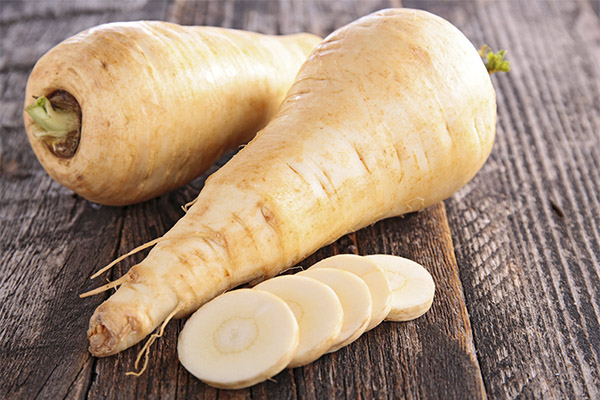
- If you add sugar to parsnips, you get a product with an appetite-raising effect.
- Scientists have not been able to determine who first discovered the properties of the vegetable. For example, the seeds were found in Switzerland during the excavation of the site of ancient man. At the same time, parsnip or a plant similar to it was found in the diet of the Peruvian Inca Indians.
- For Emperor Tiberius, the crop was cultivated rather far from the Eternal City, in the Germanic colonies. This was due to the fact that the fruits grown in the northern regions were much tastier.
- Until the 19th century, parsnips played an important role in the diet of Europeans. But with the discovery of previously unknown plants such as turnips, rutabaga, white carrots became undeservedly forgotten. The exception is Great Britain. Even to this day, this root vegetable is often seen on the table there. It is served in boiled form with meat, from it are prepared jam and even alcoholic beverages.
«Important: All information on this site is provided solely for introductory for educational purposes. Before applying any recommendations, consult a specialist. specialist before using any of the recommendations. Neither the editors nor the authors shall be liable for any possible harm caused by materials."

